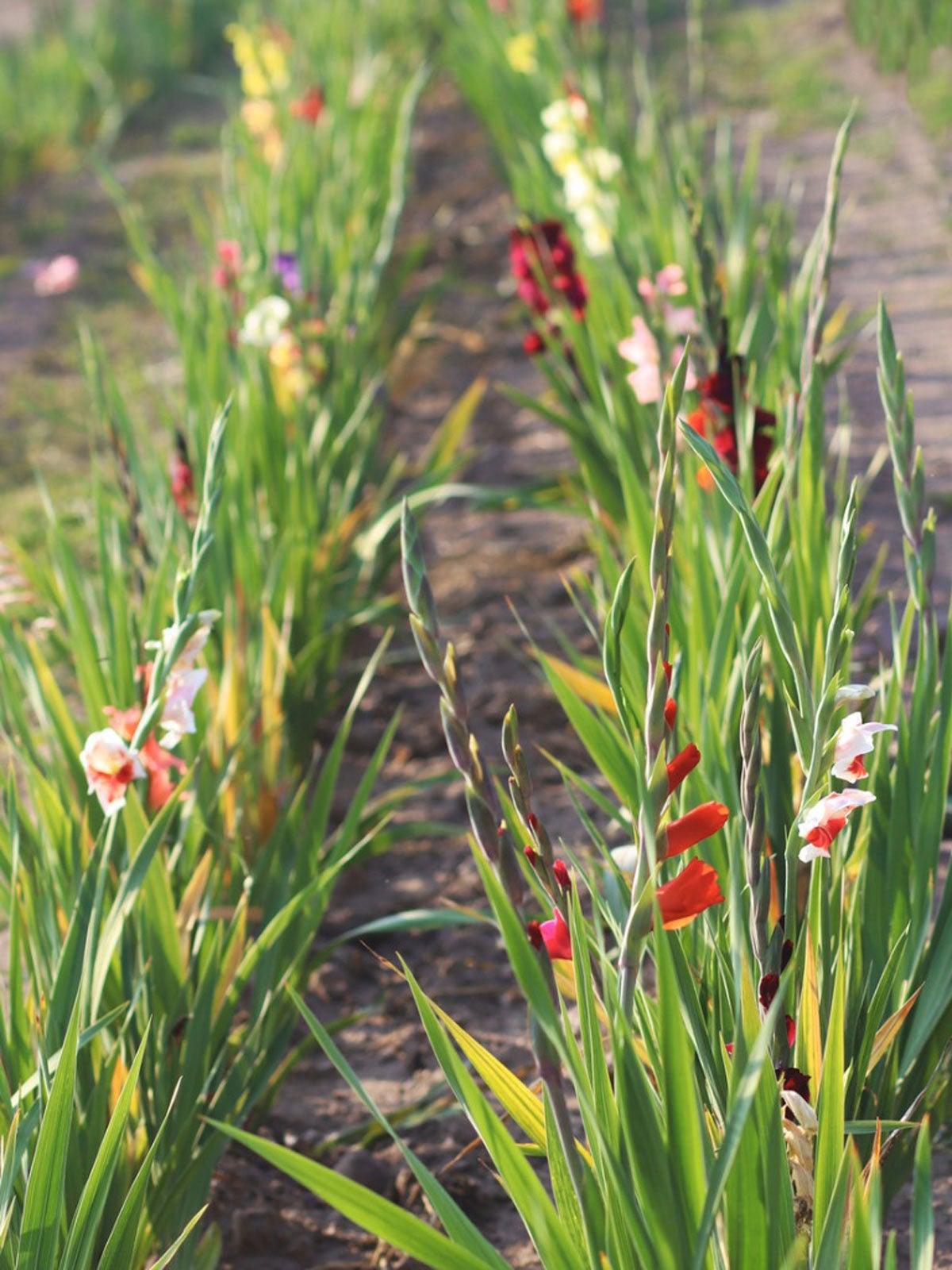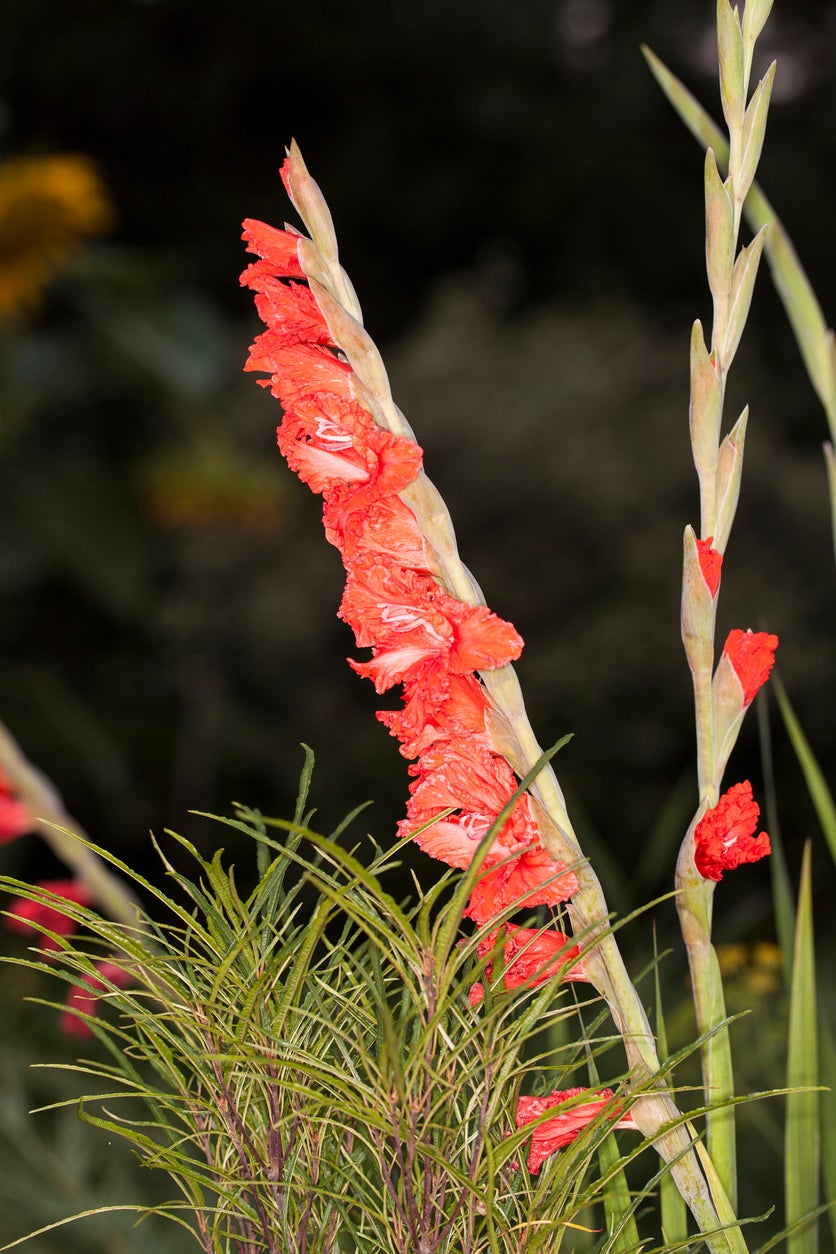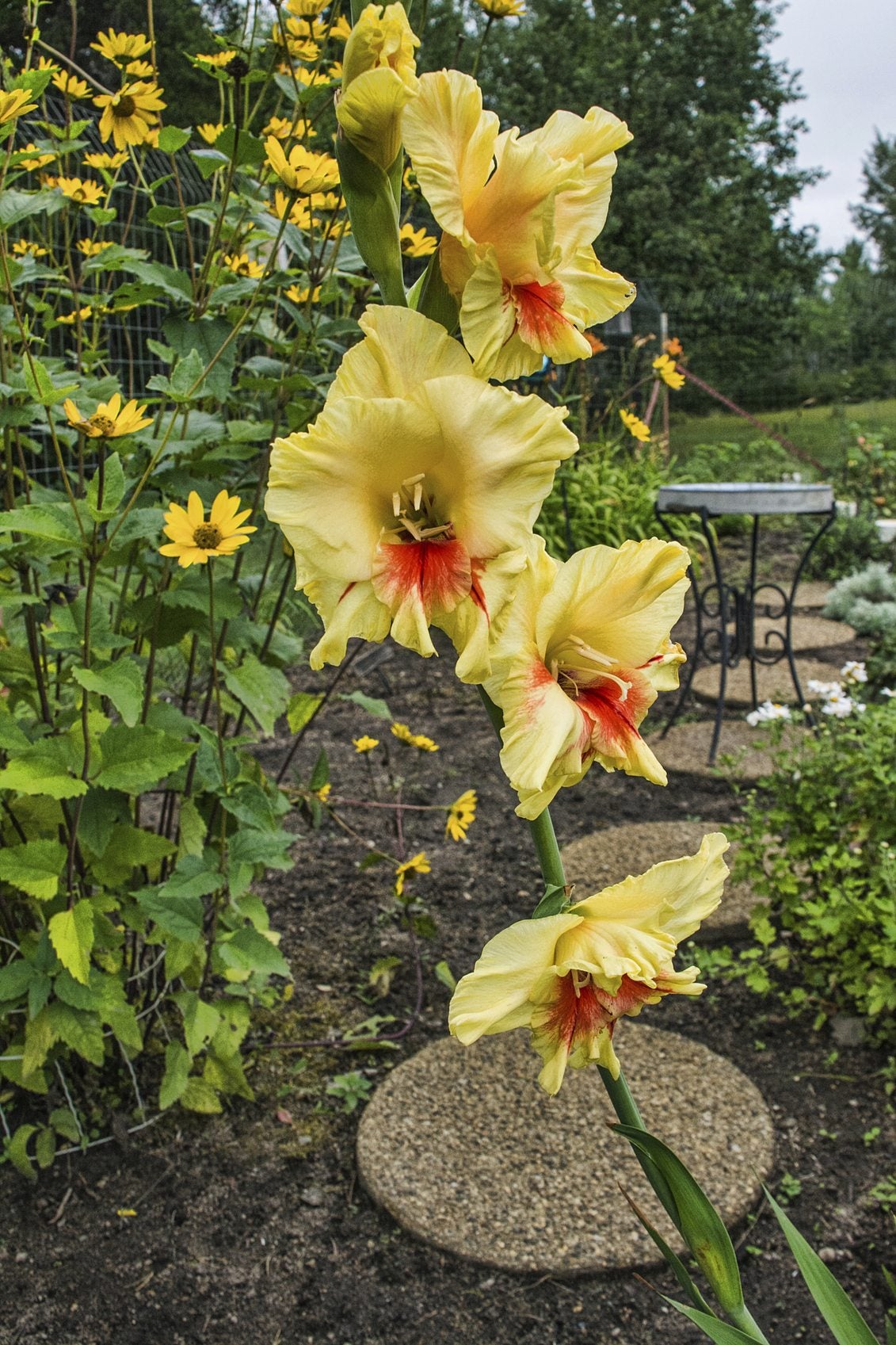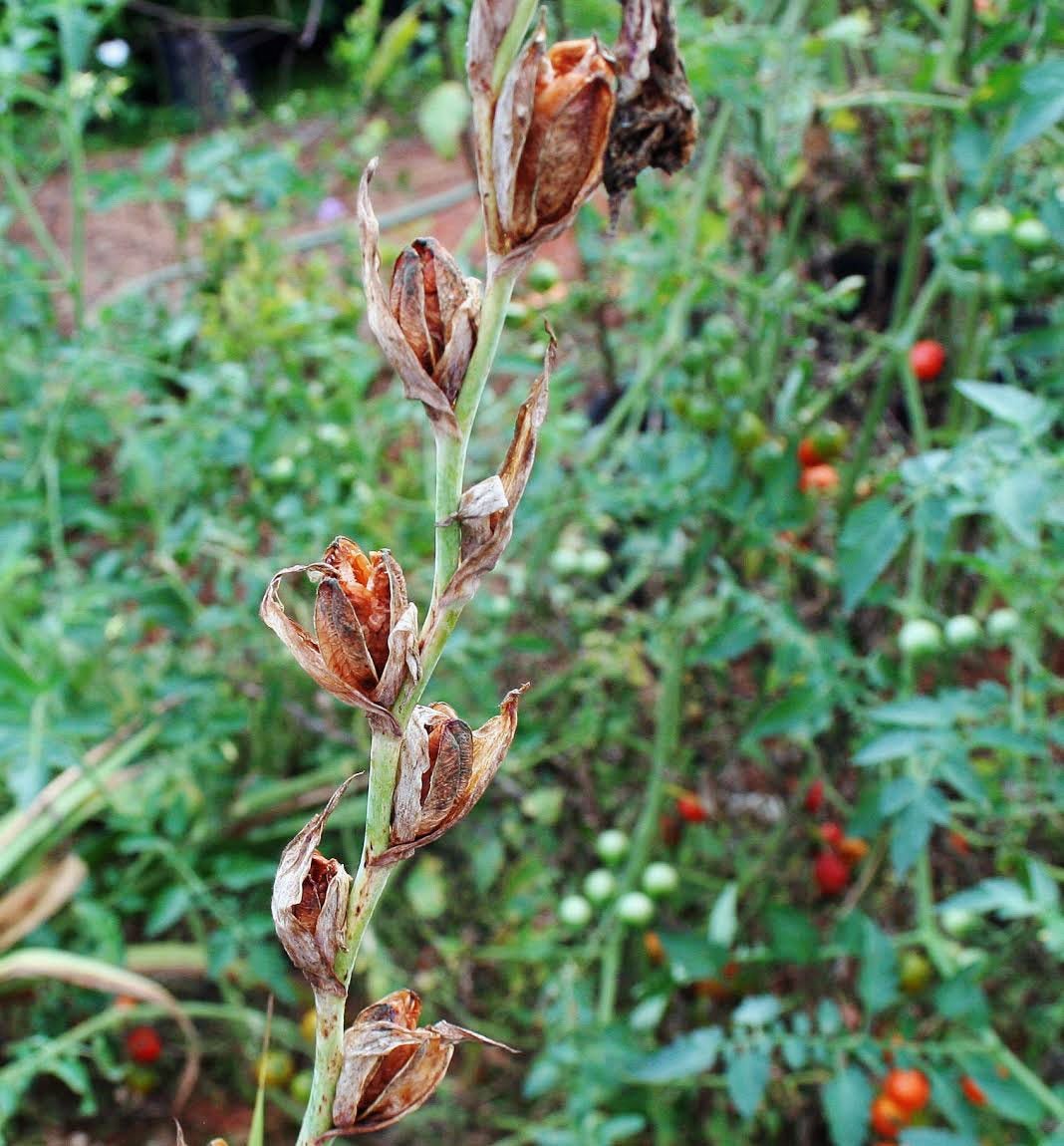Gladioli Mosaic Virus – Managing Symptoms Of Gladiolus Mosaic

Gladiolus is a classic, summer-blooming bulb/corm that many associate with grandma’s house. The tall, vertical stems packed with colorful blooms are featured in many cutting gardens for midsummer bouquets. When issues like mosaic occur, this can naturally be alarming. Good cultural control can help prevent mosaic virus in gladiolus.
Gladiolus Plants with Mosaic Virus
Gladioli mosaic virus infects gladiolus as well as other bulb plants, vegetables, field legumes, and common weeds. Both bean yellow mosaic virus and cucumber mosaic virus are transmitted by aphids moving from plant to plant or through tools used to gather flowers and corms.
Mosaic virus produces mild symptoms unless a combination of BYMV and CMV are transmitted, then symptoms are more severe. Symptoms of gladiolus mosaic include a dark to light green or yellow mottling of leaves that are sometimes hard to see. Flowers may show a white variegation. Narrow-striped break patterns also have been noted in flower coloration.
Infection by BYMV can reduce by one-third the number of gladiolus corms produced. Also expect a shorter lifespan in gladiolus plants with mosaic.
Gladiolus Mosaic Treatment
Unfortunately, there is no treatment or cure for mosaic virus. The best method of control is to use stock that is tested virus free.
Gladiolus that is determined to be infected should be removed and destroyed to prevent transmission of the virus to other susceptible plants. Corms also can be infected during storage through aphid attacks.
The following methods of cultural control can help prevent widespread mosaic infection in healthy plants:
Gardening tips, videos, info and more delivered right to your inbox!
Sign up for the Gardening Know How newsletter today and receive a free copy of our e-book "How to Grow Delicious Tomatoes".
- Purchase virus-free seedling cultivars.
- Control aphids with appropriate insecticides.
- Avoid planting gladiolus near beans, clover and other legumes.
- Frequently disinfect tools in a 10 percent bleach solution before using.
- Consider covering plants with a fine mesh screen to deter aphids and other insects.
- Eliminate weeds.
Practicing vigilance in the garden can help keep gladiolus and other susceptible plants free from mosaic virus.

After graduating from Oklahoma State University with a degree in English, Susan pursued a career in communications. In addition, she wrote garden articles for magazines and authored a newspaper gardening column for many years. She contributed South-Central regional gardening columns for four years to Lowes.com. While living in Oklahoma, she served as a master gardener for 17 years.
-
 Get Ready For A Summer Of Hummers! Grow These Full Sun Hummingbird Plants and Flowers
Get Ready For A Summer Of Hummers! Grow These Full Sun Hummingbird Plants and FlowersIf you’re lucky enough to enjoy a sunny backyard, make sure you are maxing out on your pollinator opportunities and grow these full sun hummingbird plants and flowers
By Tonya Barnett
-
 12 Lush Alternatives To A Lawn For Sustainable Spaces
12 Lush Alternatives To A Lawn For Sustainable SpacesAlternatives to a lawn are beautiful and also beneficial to your local ecosystem and its pollinators. Explore our top picks for plants to replace grass.
By Tonya Barnett
-
 Gladiolus Plants With Scab – Controlling Gladiolus Scab On Corms
Gladiolus Plants With Scab – Controlling Gladiolus Scab On CormsIf you are growing gladioli, you’ll want to know about gladiolus scab. For more information and tips on prevention and control, click here.
By Teo Spengler
-
 Botrytis On Gladiolus Plants: How To Control Gladiolus Botrytis Blight
Botrytis On Gladiolus Plants: How To Control Gladiolus Botrytis BlightGladiolus botrytis diseases are not uncommon, so knowing the signs and how to manage them is important. Learn about gladiolus blight here.
By Mary Ellen Ellis
-
Treating Glads With Fusarium: How To Control Gladiolus Fusarium Rot
If the corms of your unplanted glads appear discolored and unhealthy, they may be infected with gladiolus fusarium rot. Learn more about fusarium wilt and rot on gladiolus plants in this article to see if your corms can be saved.
By Becca Badgett
-
Gladiolus Leaf Diseases: What Causes Leaf Spots On Gladiolus Plants
When kept healthy and disease free, gladiolus plants will return year after year. Issues like gladiolus leaf spot, however, may cause decline of your plants. Becoming familiar with the signs of gladiolus leaf diseases is important in preventing spread. Learn more here.
By Tonya Barnett
-
 Is Your Gladiolus Falling Over – How To Stake Glads In The Garden
Is Your Gladiolus Falling Over – How To Stake Glads In The GardenGrowing glads is so simple, but sometimes the tall gladiolus falling over in the garden can be troublesome, if not unattractive. Luckily, with a little added support, this can be easily remedied. Click this article for additional information.
By Mary H. Dyer
-
 Gladiolus Are Falling Over – Learn About Staking Gladiolus Plants
Gladiolus Are Falling Over – Learn About Staking Gladiolus PlantsProlific bloomers they are, but gladiolus plants falling over is not uncommon. Staking gladiolus plants will keep their brightly colored heads from dipping or breaking, and there are any number of items that can be used as gladiolus plant stakes. Learn more here.
By Amy Grant
-
 Companion Planting With Gladiolus: Plants That Grow Well With Gladiolus
Companion Planting With Gladiolus: Plants That Grow Well With GladiolusAs well as bouquets, gladiolus looks amazing in flower beds and along garden borders. But what are some good companion plants for gladiolus? Click this article to learn more about plants that grow well with gladiolus.
By Liz Baessler
-
 Gladiolus Seed Pods: Harvesting Gladiolus Seeds For Planting
Gladiolus Seed Pods: Harvesting Gladiolus Seeds For PlantingYou can try saving gladiolus seeds to preserve a favorite variety and share it with other gardeners. It's easy to do, but the flowers are a long time coming. This article will provide more information about harvesting these pods on gladiolus.
By Bonnie L. Grant